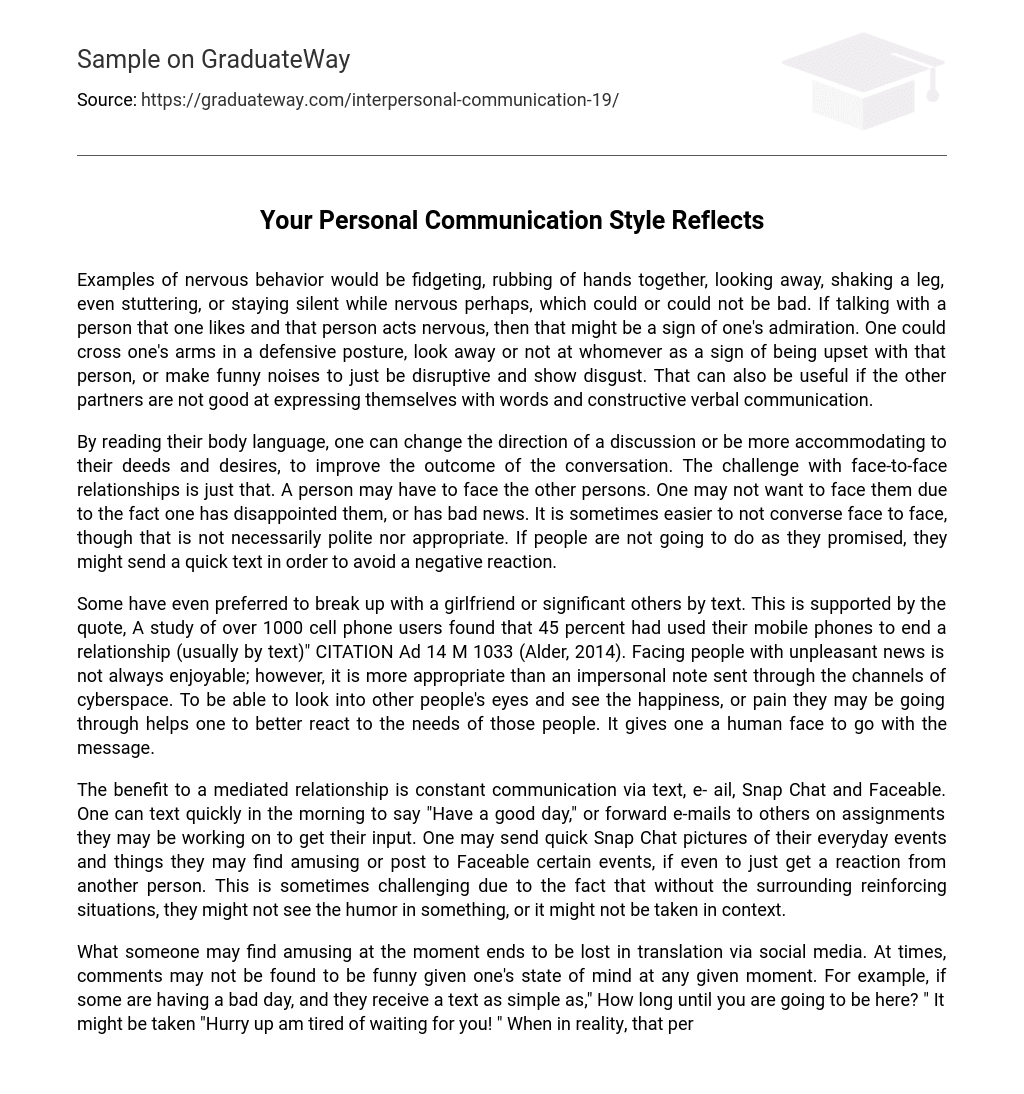Examples of nervous behavior would be fidgeting, rubbing of hands together, looking away, shaking a leg, even stuttering, or staying silent while nervous perhaps, which could or could not be bad. If talking with a person that one likes and that person acts nervous, then that might be a sign of one’s admiration. One could cross one’s arms in a defensive posture, look away or not at whomever as a sign of being upset with that person, or make funny noises to just be disruptive and show disgust. That can also be useful if the other partners are not good at expressing themselves with words and constructive verbal communication.
By reading their body language, one can change the direction of a discussion or be more accommodating to their deeds and desires, to improve the outcome of the conversation. The challenge with face-to-face relationships is just that. A person may have to face the other persons. One may not want to face them due to the fact one has disappointed them, or has bad news. It is sometimes easier to not converse face to face, though that is not necessarily polite nor appropriate. If people are not going to do as they promised, they might send a quick text in order to avoid a negative reaction.
Some have even preferred to break up with a girlfriend or significant others by text. This is supported by the quote, A study of over 1000 cell phone users found that 45 percent had used their mobile phones to end a relationship (usually by text)” CITATION Ad 14 M 1033 (Alder, 2014). Facing people with unpleasant news is not always enjoyable; however, it is more appropriate than an impersonal note sent through the channels of cyberspace. To be able to look into other people’s eyes and see the happiness, or pain they may be going through helps one to better react to the needs of those people. It gives one a human face to go with the message.
The benefit to a mediated relationship is constant communication via text, e- ail, Snap Chat and Faceable. One can text quickly in the morning to say “Have a good day,” or forward e-mails to others on assignments they may be working on to get their input. One may send quick Snap Chat pictures of their everyday events and things they may find amusing or post to Faceable certain events, if even to just get a reaction from another person. This is sometimes challenging due to the fact that without the surrounding reinforcing situations, they might not see the humor in something, or it might not be taken in context.
What someone may find amusing at the moment ends to be lost in translation via social media. At times, comments may not be found to be funny given one’s state of mind at any given moment. For example, if some are having a bad day, and they receive a text as simple as,” How long until you are going to be here? ” It might be taken “Hurry up am tired of waiting for you! ” When in reality, that person is just planning ahead or maybe has something quick to do and would like to get it done prior to one’s arrival. Therefore, the response might be “l will be there when I’m there! Then that will prompt another reply that is negative and so on. This is supported by the quote, “Just as there is a personal element in many impersonal settings, there is also an impersonal element in our relationships with the people we care most about. There are occasions when we don’t want to be personal: when we are distracted, tired, busy, or just not interested” (Alder, 2014). Due to the fact that someone cannot hear a tone of voice, see an expression, or be face to face for an added sixteen words of explanation to clarify their actual needs or concerns, gaps in communication arise.
Miscommunication arises. They cannot indicate they were trying to be polite and just make sure they are there when whomever arrives to meet them. To prevent this from happening frequently, one might agree to be specific in testing by talking verbally on important matters. If they detect some aggression in a text or mediated relationship of some kind, people can simply call others to confirm if they are reading others correctly and not jumping to conclusions.





